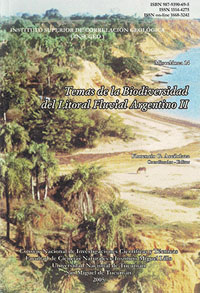Miscelánea 14
Las Ingresiones marinas del Neógeno en el sur de Entre Ríos (Argentina) y Litoral Oeste de Uruguay y su contenido malacológico
Sergio Martínez | Claudia Julia Del Río
Descargar trabajo en formato PDFAbstract
MOLLUSC FAUNAS OF THE NEOGENE MARINE TRANSGRESSIONS IN SOUTHERN ENTRE RIOS AND WESTERN LITTORAL OF URUGUAY.- Positive oscilations of the sea level during the Late Miocene, Late Pleistocene, and Holocene deposited fossiliferous sequences exposed along Argentinian and Uruguayan littorals. The study of the molluscan assemblages allowed to make inferences about some environmental factors, mainly salinity and temperature. According to faunistic evidence, the relatively high values of species richness, salinity and temperature recorded at the Late Miocene (corresponding to warm and normal salinity conditions), were progressively decreasing during subsequent transgressions. However, even in the youngest deposits (Holocene), the taxonomic composition indicates higher salinity and temperature values than at present. Since around 3000 years AP, there are no records of estuarine or marine molluscs in the studied area.






